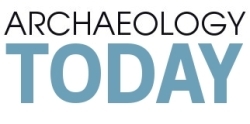
November 3rd, 2013
The mummified body of Egyptian pharaoh Tutankhamun burst into flames inside his sarcophagus after a botched attempt to embalm him, according to scientists in a new documentary. After his death in 1323 BC, Tutankhamun was rapidly embalmed and buried, but fire investigators believe a chemical reaction caused by embalming oils used on his mummy sparked the blaze. A fragment of flesh from the boy pharaoh, whose tomb was discovered in 1922 by Howard Carter and the Earl of Carnarvon, was tested by researchers who confirmed his body was burnt while sealed in his coffin.(Daily Mail)
Persian silk in Viking burials
The silk trade was far more comprehensive than we have hitherto assumed and recent research may change our perceptions of the history of the Norwegian Vikings. After four years of in-depth investigation of the silk trade of the Viking Age, Marianne Vedeler, Associate Professor at the Museum of Cultural History, University of Oslo has found that the Norwegian Vikings maintained trade connections with Persia and the Byzantine Empire through a network of traders from a variety of places and cultures who brought the silk to the Nordic countries. (Iranian.com)
King Herod’s Tomb a Mystery Yet Again
Herod the Great, the king of Judea who ruled not long before the time of Jesus, seems to have eluded historians once again. In 2007 archaeologists announced they had found the great king’s tomb, a surprisingly modest mausoleum that was part of the Herodium, a massive complex built by Herod on a cone-shaped hill in the desert outside Jerusalem. (LiveScience)
Blow to multiple human species idea
The idea that there were several different human species walking the Earth two million years ago has been dealt a blow. Instead, scientists say early human fossils found in Africa and Eurasia may have been part of the same species. Writing in the journal Science, the team says that Homo habilis, Homo rudolfensis and Homo erectus are all part of a single evolving lineage that led to modern humans. (BBC News)
Archaeologists discover 3,000-year-old religious center in northern Peru
A religious center more than 3,000 years old from the pre-Incan Chavin culture has been discovered by Peruvian researchers in the Congona archaeological zone in northern Peru’s Lambayeque region, archaeologist Walter Alva said Thursday. (Global Post)
Aztalan offers a peek into the past
Westbound from Milwaukee, the scenery on I-94 gradually shifts from subdivision and strip malls to rolling Wisconsin prairie blanketed in cornfields. At Exit 259, about two-thirds of the way to Madison, some make a seven-minute detour to Aztalan State Park, a tranquil rest stop on the banks of the Crawfish River. It’s a chance to see an unusual archaeological site, an outpost of a long-lost Indian civilization. Toward twilight, you can sit atop a grass-covered, 900-year-old ceremonial mound and take in the pastoral vistas. (BendBulletin)
Archaeology project unearths history at Quail Creek
The digging is over but the work has just begun on an archaeological project just inside the entrance to Quail Creek.
WestLand Resources in Tucson has had 10 workers at the two-acre site for about six weeks, and on Thursday ended what it calls data recovery. They’ll spend the next several months processing and analyzing artifacts and preparing a report for Quail Creek developer Robson Communities, which requested the work. (Sahuarita Sun)
At a cemetery on the eastern fringes of Roman London in 100AD, a sombre, yet grand ceremony was taking place. A prosperous citizen was being buried just outside the city boundaries — no Roman, however rich, could be buried within the city walls to prevent the spread of disease. (IOL Scitech)





